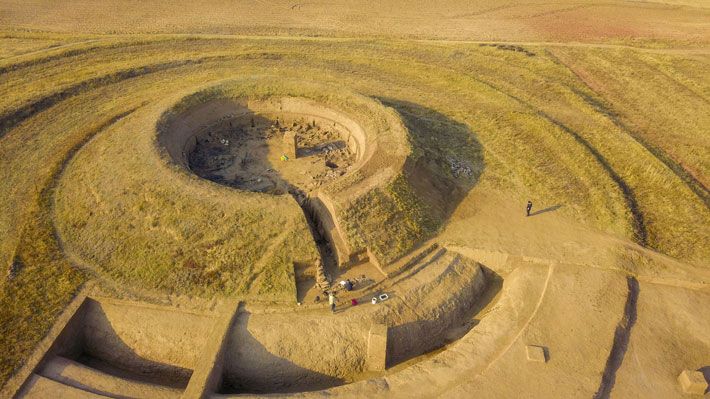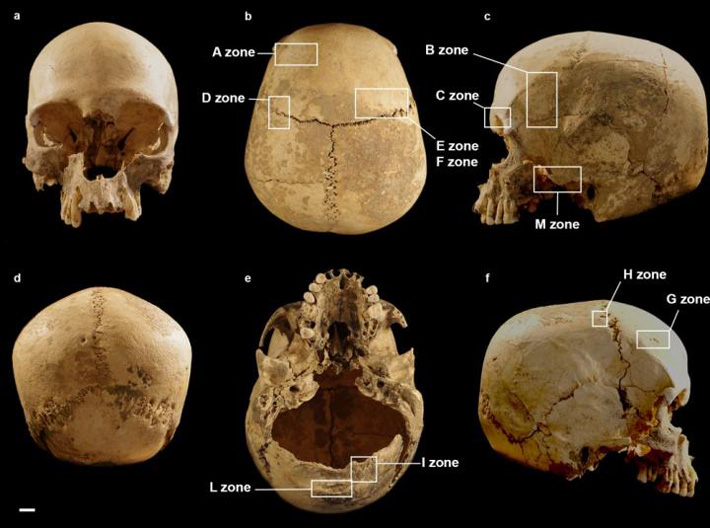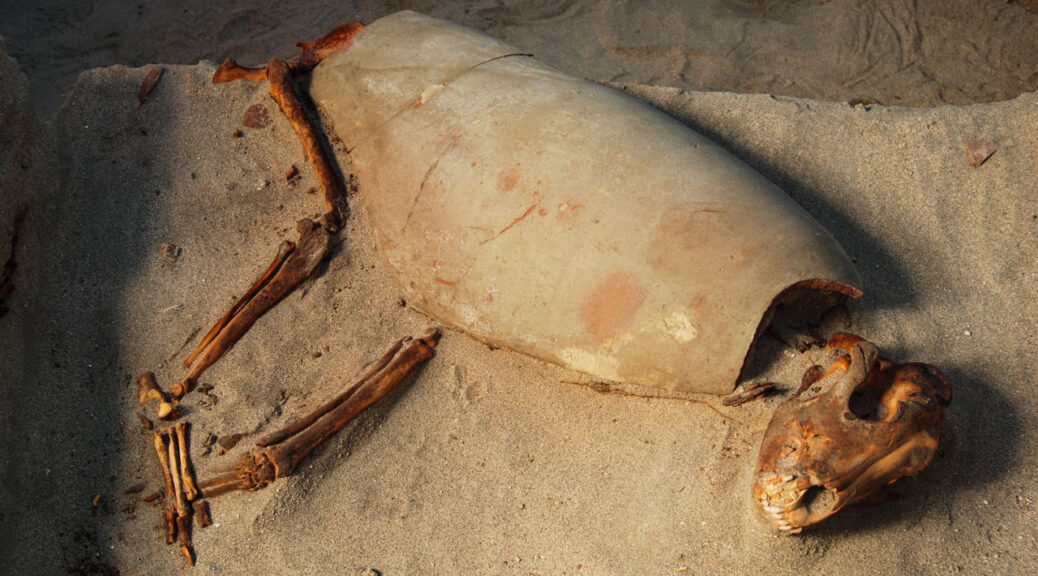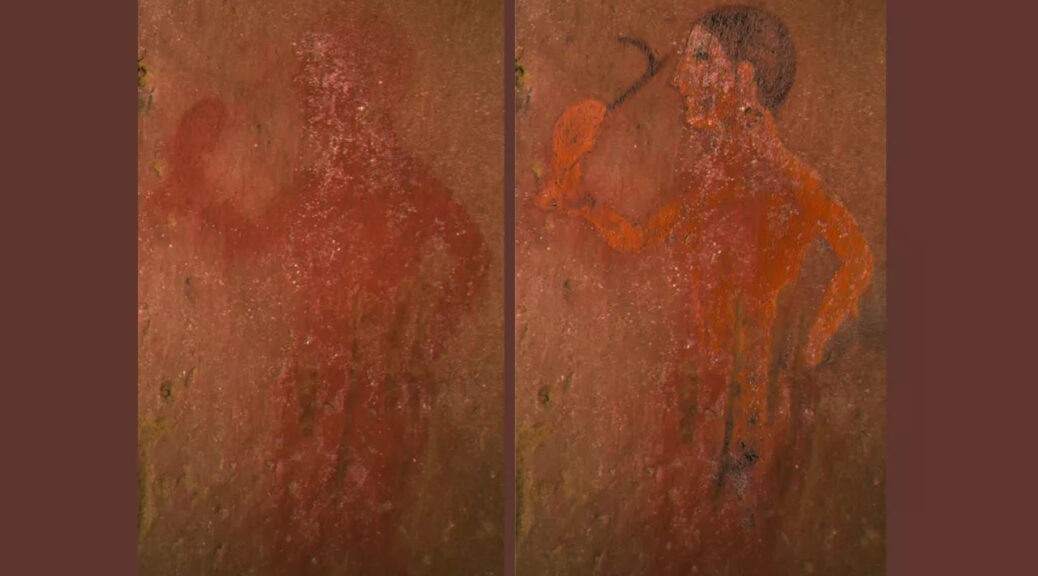Ottoman-Era Bath and Byzantine Doorway Found in Greece
According to a statement released by Greece’s Ministry of Culture and Sports, restoration work and surveys at the site of the medieval castle of Mytilene, which is located on the island of Lesbos, revealed a sixteenth-century A.D.

The findings, which date from the 6th to 7th centuries AD, shed new light on life on the island of Lesvos, especially regarding the defence of the island in those times.
Pavlos Triantaphyllides, the head of the Ephorate, notes that the findings can be considered of special importance for the defence architecture of the Castle of Mytilene during early Byzantine history and of Mytilene as a whole.
Triantaphyllides probably says that it has now been established that the pre-Byzantine gate of the Castle is connected to the hitherto-unknown Byzantine settlement of Melanoudi, which was prominent in the area until its conquest by the Ottomans.
Entering the castle from Epano Skala, an Ottoman bath from the 16th century was found, which experts say is in “very good condition.” The bath was owned by Haireddin Pasha Barbarossa, who was originally from Mytilene.
The earliest bath ever found on Lesvos
This is the earliest bath that has ever been found on the island of Lesvos and it features vaulted areas of hot, lukewarm and cold baths with the necessary fire pits underneath, as shown by the short columns which supported the floor of the baths.

According to the Ephorate, it will be covered with a canopy and will eventually be open to the public at some point in the future. The archaeologists state that the most important discovery, however, lies beneath the foundations of the baths. The early Byzantine gate of the 7th century AD was located there, leading to Melanoudi, a well-known Byzantine town that we did not know the precise location of until today.
Gate leading to a new city underneath the castle
This is simply because the oldest medieval remains uncovered thus far until now had been those dating back to the 14th century. “While it had been considered that the lower part of the castle was wallless, the new excavation findings come to show us the walls of the lower castle,” explains Triantaphyllides.
“This gate is made of amazing marble from an ancient material, being recycled from previous use. It has a total height of 3.20 meters (10.5 feet), and a width of 2.05 meters (6.7 feet) and a depth of two meters (6.5 feet).
“A total of nine slabs of local grey-white marble were used for its construction, while cavities in the lintel indicate the existence of a wooden door, adapted with swivels,” the archaeologist notes.
“Its pilasters are decorated with ribbons and a convex wave, while the lintel has a convex cornice,” adds the Curator of Antiquities.
What was the town of Melanoudi?
According to Triantaphyllides, Melanoudi must have had around 1,000 inhabitants in its heyday. He states the medieval inhabitants of the city of Mytilene “had to contact from the northern port through the port that still exists today. If you remember, some remains of the Hellenistic wall are still preserved in the sea today, which seem to have been used during the Middle Ages.
“On the other side of the walls there were baths, there were houses,” he says.
“Certainly there are some Christian temples that we have not identified at the moment,” the archaeologist says. “For the early phase of the city in the 6th and 7th century the excavation research which we hope to continue in the next period of time with other funds will give us a lot of information.
“We are talking about the 7th-century Byzantine settlement that existed inside the castle and was by the sea.”
According to these recent findings, the Byzantine city was located down four meters from the current surface of the ground where people walk today inside the castle.
“It is very impressive as a find and unfortunately in Greece we do not know many similar examples with the early Byzantine fortifications because it is an extremely difficult period, this is the period of transition from paganism to Christianity where archaeological evidence is usually scarce,” notes Triantaphyllides.
Restoration ongoing in the area; bicycle trail proposed
In the lower castle area, a new bicycle path will be created as part of the co-financed European program of Sustainable Urban Regeneration. Under the auspices of the NSRF 2014-2020 of the North Aegean Region, a new traffic pattern will also be created for the area.
In a short time, the bicycle road that will go to the project will be completed by the municipality. Two Ottoman-era homes are already being restored; one of these will serve as a centre of information and documentation for the entire history of the island of Lesvos. The second house offer space for educational programs for children, who will be also able to explore the ancient and medieval-era ruins in special tours led by archaeologists.
“We will explain to the children how they were built, how the houses, the temples, the walls were built. And the children will be given a complete picture of what this medieval castle of Mytilene was like,” says Triantaphyllides.

























